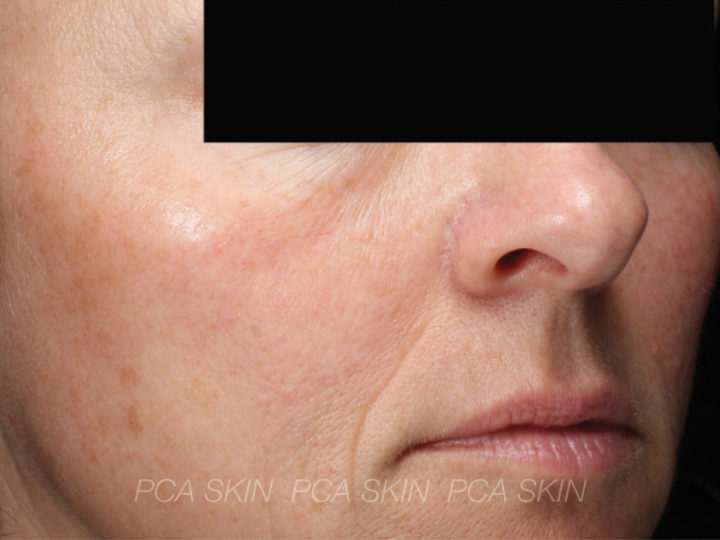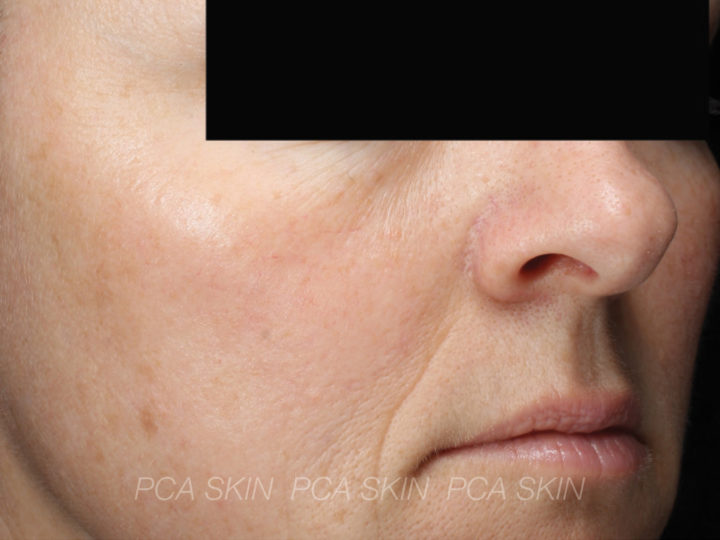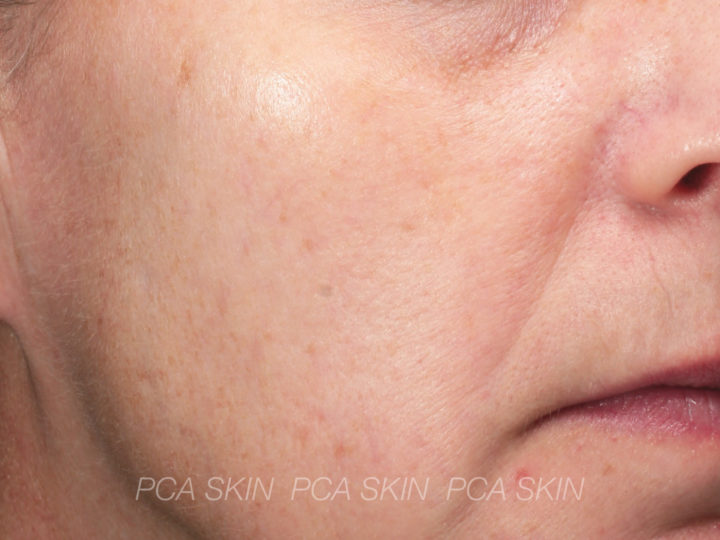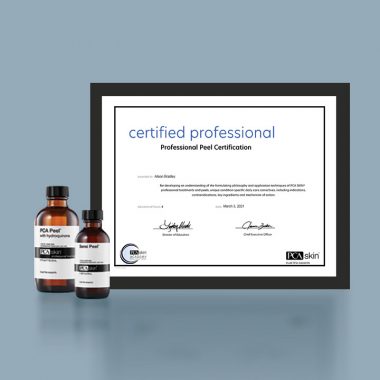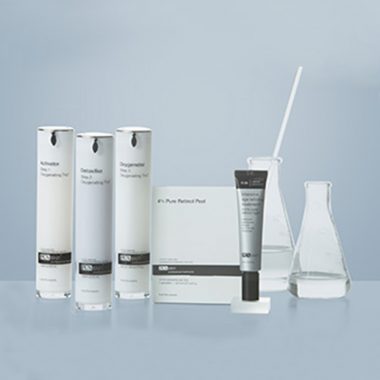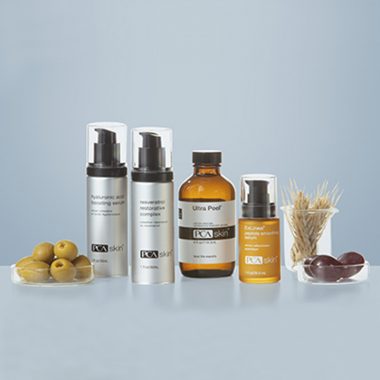Aging
Visible aging is characterized by changes in the skin due to degradation of its structure and elasticity over time. These changes are due to a combination of multiple physiological and environmental factors.
Jump to
Annotated illustrations of aging skin
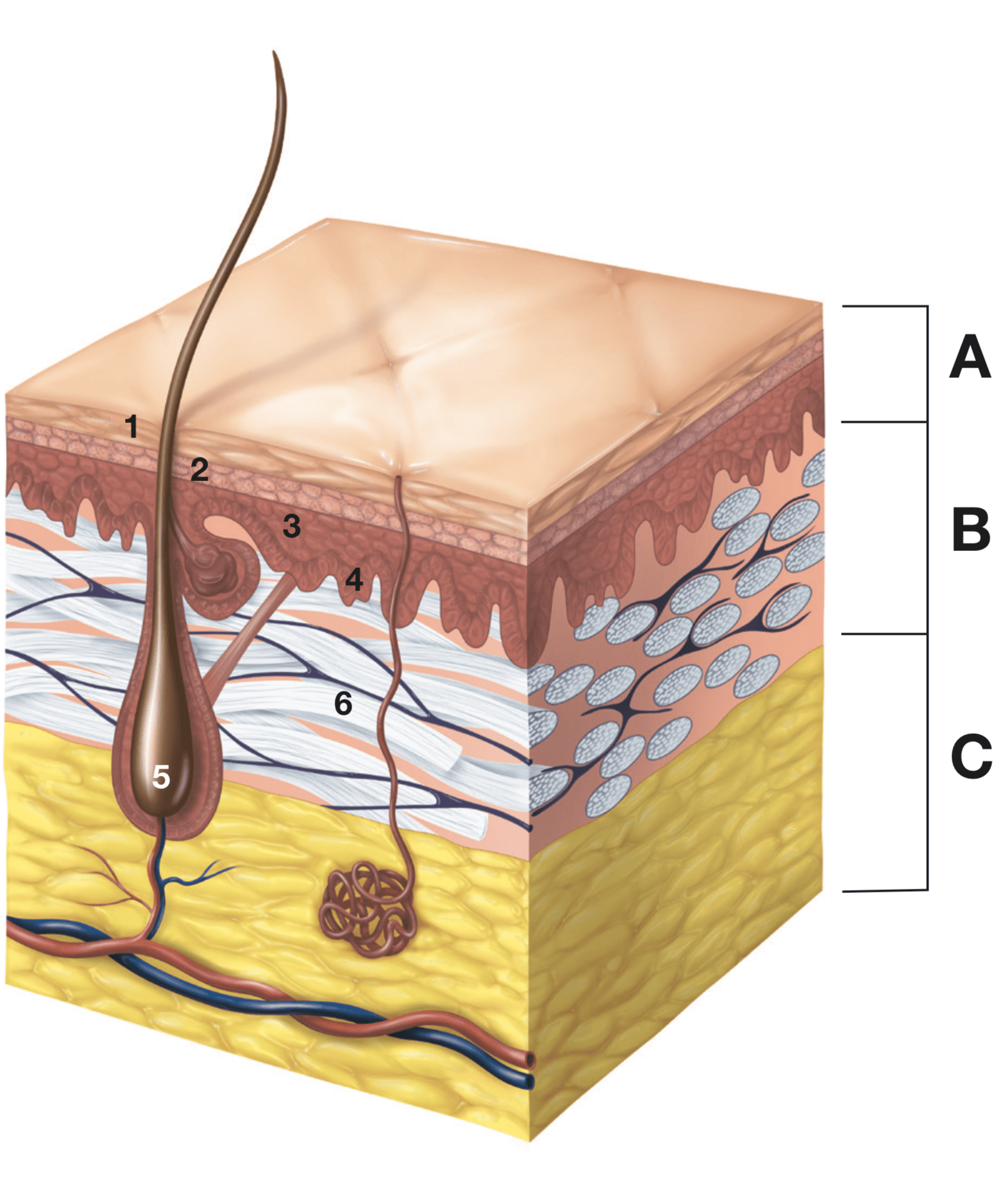
Younger skin
A. Epidermis
- Cornified layer (stratum corneum)
- Granular layer
- Spinous layer
- Basal layer
B. Dermis
- Hair follicle
- Collagen and elastin fiber
C. Subcutaneous tissue
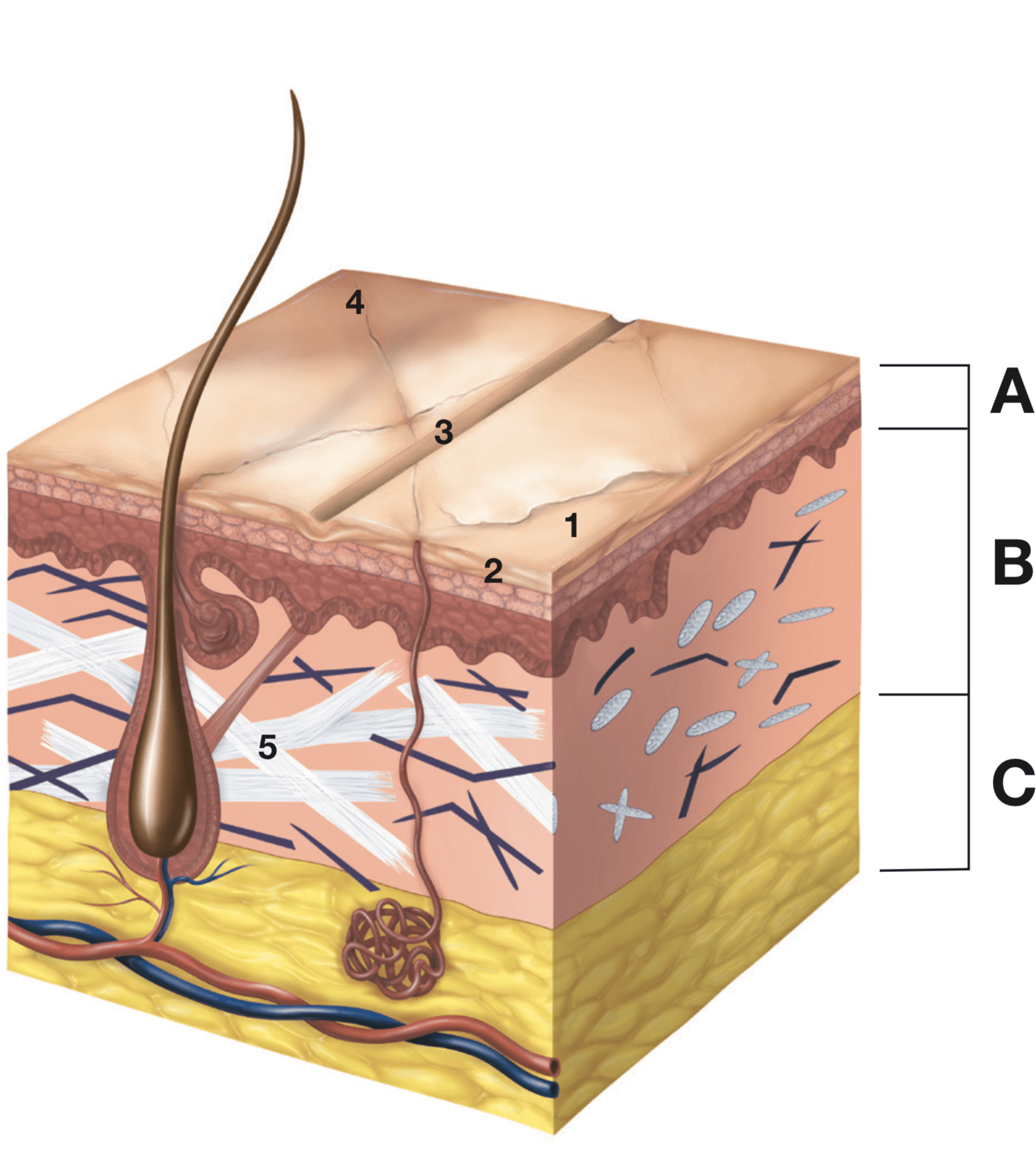
Older skin
A. Thinning epidermis
- Dry stratum corneum due to decreased NMF
- Decreased desquamation leading to dull surface appearance
- Visible fine lines and wrinkles
- Discolorations and lentigos
B. Dermis
- Cross-linking of collagen fibers, loss of elasticity, and reduction of collagen distribution
C. Loss of subcutaneous tissue
Before & After
Types
& Causes
Types of Aging
Intrinsic aging
Intrinsic aging refers to the physiological breakdown that occurs naturally due to genetics and the passage of time. As skin ages, there is a natural loss of adipose (fat) tissue and a shrinking of the bones. The dermis thins by an average of 20% as we age and there is also a decrease in the thickness of the epidermis. Desquamation slows while the cellular renewal process is reduced, leading to a buildup of dead surface cells and therefore a dull appearance.
Intrinsic factors are also responsible for the natural slowing of collagen, elastin, and glycosaminoglycan (GAG) production. Elastic fibers responsible for skin’s flexibility may develop small cysts or gaps, leading to a loss of flexibility. This natural aging process leads to a reduction of the distribution of nutrients to the dermis and epidermis.The onset of visible intrinsic aging is determined by a person’s genetics. Because of this, those of differing ethnic backgrounds will typically experience the visible signs of aging at different times throughout life.
Extrinsic aging
Although generally thought to be responsible for up to 85% of the visible signs of skin aging, extrinsic aging is considered to be preventable. Sun exposure, an unhealthy lifestyle, gravity, environmental pollutants, and chronic inflammation contribute to a breakdown of the skin’s extracellular matrix (ECM), including collagen, elastin, and GAG. Over-exposure to any of these offenders increases the production of matrix metalloproteinases (MMP), the enzymes responsible for the breakdown of the skin’s support system.
Common results of extrinsic aging include a degradation of collagen, elastin, and GAG, leading to laxity, wrinkling, and dehydration. Collagen becomes disorganized and cross-linked, disrupting the structure necessary for firm, healthy skin, resulting in wrinkles. Depending upon the severity of UV damage, the epidermis displays abnormal thickening and coarsening. An increased number of melanocytes and abnormal dilation of the blood vessels, usually due to sun exposure, is typical. These UV-related changes are responsible for uneven pigmentation, as well as increased facial redness and telangiectasias.
Extrinsic aging can present at various chronological ages depending upon exposure to these destructive factors, always becoming more apparent with time. Those who protect themselves from the elements from a young age can significantly reduce many of the avoidable visible signs of aging.
Presentations of aging skin
- Fine lines form naturally over time as collagen production slows and skin hydration decreases.
- Thinning of skin can occur due to a drop in estrogen levels during menopause. It is also exacerbated by UV exposure.
- Dryness/dehydration occurs naturally over time as the skin’s proteoglycan production slows. Proteoglycans, such as hyaluronic acid, are responsible for attracting and holding moisture in the skin. Dryness will increase with prolonged use of aggressive topical products, improper cleansing, and moisturization practices, reducing the skin’s barrier function. Time and sun exposure also lead to an impacted stratum corneum and increased surface dryness.
- Deep/abnormal wrinkling are caused primarily by extrinsic factors. UVA rays cause an accelerated breakdown and cross-linking of collagen. Lipid oxidation, caused by free radical damage, triggers MMP enzymes to break down both elastin and collagen. Smoking creates abnormal vertical lines around the mouth. Facial expressions, such as frowning and smiling, are responsible for deeper lines in the glabella, forehead, and around the mouth, as well as “crow’s feet” around the eyes.
The density of melanocytes actually decreases with the natural aging process, although hormonal shifts during menopause can increase the number and activity level of melanocytes. Actinic damage, pregnancy, and menopause will increase the number of melanocytes and increase pigment deposits in the keratinocytes.
- Sagging/laxity is caused by both intrinsic and extrinsic factors. Shrinking of the bones and loss of adipose (fat) tissue allows the skin to sag naturally over time. Gravity, along with the cross-linking and loss of collagen, also contribute.
- Hyperpigmentation is a result of sun exposure, hormones, and inflammation.
- Telangiectasias become more visible as the skin thins and becomes more transparent with age. UV exposure causes dilation of capillaries along with a thinning of their walls, making blood vessels more visible and more prominent.
- Enlargement of pores is a result of a reduction of collagen in the skin caused by actinic damage. Pores appear larger as the support of the surrounding collagen decreases.
- Coarsening of skin is caused by a buildup of dead skin cells in the stratum corneum; proliferation and desquamation decreases with time and with exposure to the elements.
Treatments
& Protocols
How to Treat
-
Aging: Gently Exfoliate and Increase Cell Turnover -
Aging: Increase Collagen and Other Matrix Proteins -
Aging: Inhibit Melanogenesis -
Aging: Increase Hydration -
Aging: Protect From UV Rays and Other Inflammatory Stimulants
Professional Treatment Protocols
-
Ultra Peel® Treatment Protocol -
Smoothing Body Peel® Treatment Protocol -
PCA Peel® Treatment Protocol -
Therapeutic Mask Treatment Protocol -
4% Pure Retinol Peel or 6% Pure Retinol Peel Protocol -
Advanced Treatment Booster Protocol -
Oxygenating Trio® Treatment Protocol -
Enzymatic Treatment Protocol

